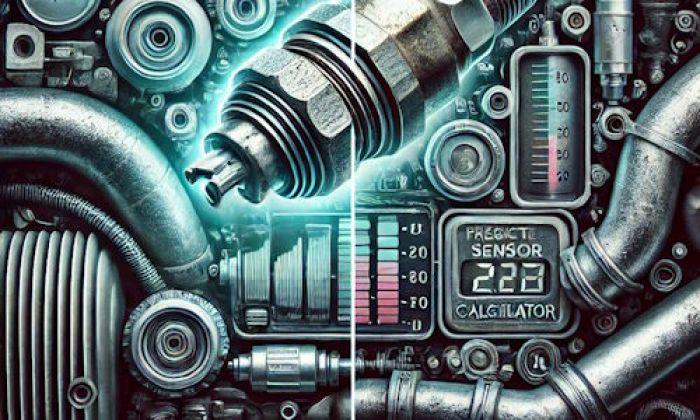A purge valve is an essential component of a vehicle's emission control system, and it plays a key role in preventing fuel vapors from entering the atmosphere. The purge valve is located between the fuel tank and the intake manifold, and it allows fresh air to enter the fuel system when the engine is not running. This prevents fuel vapors from being released into the environment.
Fuel supply problems highlights
- DIY repairs:very complicated
- Tools needed:pro electrician's tools
- Commonreasons:power supply, electric units issues
- Time to repair:3 - 5 hours
- Price for parts:$150 - $600
- Can you drive?No
- Alternative solutions:no solution but repairing the problem
.jpg)
What is a Purge Valve?
A purge valve is a component of the evaporative emission control system (EVAP) in a car. Its function is to allow fresh air into the EVAP canister, which contains charcoal that has absorbed fuel vapors from the fuel tank. The purpose of the purge valve is to prevent these vapors from being released into the atmosphere.
How Does It Operate?
The purge valve is controlled by the engine computer (ECU). When the ECU determines that conditions are right for purging, it sends a signal to open the purge valve. This allows fresh air to enter the EVAP canister and displace the stored vapors. The displaced vapors are then routed to the engine, where they are burned during the combustion process.
How Can Bad Purge Valve Cause Misfire?
If the purge valve is stuck open, it will allow too much air into the EVAP canister. This will cause the stored vapors to be drawn into the engine, where they will throw off the air/fuel mixture. This will result in a lean condition and can cause a misfire.
Misfire is defined as incomplete combustion of the air/fuel mixture in the engine. This can cause a variety of problems, including decreased fuel economy, loss of power, and in some cases, damage to the engine.
How to Know the Signs of a Bad Purge Valve
If your check engine light is on and you have a code for a bad purge valve, then you will need to replace it. In general, you may also experience poor engine performance, reduced fuel economy, and increased emissions if your purge valve is not functioning properly.
Most Common Causes of Purge Valve Problems and Their Solutions
There are many things that can possibly affect the purge valve either directly or indirectly. However, we will only focus on the most common causes of problems related to it that have the highest tendencies to trigger misfires in the engine.
The following are the most common causes of purge valve issues that are causing misfires and plenty of other problems in vehicles:
1. Stuck in Open
When the purge valve is open, it allows fresh air to enter the system and help burn off any excess fuel. This prevents fuel from building up and causing problems like knocking or stalling. If there's a problem with the fuel system, it can cause the purge valve to open and stay open. This will allow non-stop entry of air into the system, which will eventually cause damage to the engine.
The most common symptom of a purge valve stuck in an open position is that the engine will run rough and may even stall. This is because the engine is not able to properly regulate the air/fuel mixture. Others can include a decrease in fuel economy and an increase in emissions.
The purge valve may be behaving this way due to different factors. One is that the valve itself is dirty or damaged and needs to be replaced. Another possibility is that there is something blocking the valve, such as debris or a buildup of carbon deposits. Finally, the problem could be caused by a faulty sensor or electrical issue.
The best way to diagnose the problem is to take your car to a mechanic and have them run a diagnostic test. Once the problem is diagnosed, they can recommend the best course of action. In most cases, the problem can be fixed with a simple valve replacement. However, if the damage is more severe, you may need to replace other parts of the system, such as the sensor or electrical components.
2. Stuck in Close
When the purge valve closes, the fuel system is unable to expel any vapors from the combustion chamber which can lead to a number of issues. The most common is a rough idle, poor gas mileage, and stalling. If the purge valve becomes stuck in the closed position, it has to be addressed right away.
The possible causes of this problem are numerous, but usually, boil down to either a problem with the valve itself or with the vacuum lines that connect to it. If you suspect that the problem is with the valve, then you will need to replace it. However, if you think that the problem is with the vacuum lines, then you may be able to have them cleaned or replaced.
3. Worn O-Ring
The O-ring in the purge valve helps prevent leakage and keep fumes and vapors from escaping the engine. If you notice that your car's purge valve is leaking, it may be due to a worn O-ring. This problem can cause some issues, including engine misfires, decreased fuel economy, and increased emissions.
There are immediate solutions to this problem like cleaning and lubricating the O-ring, which will temporarily fix the issue. However, if the O-ring is damaged beyond repair, you will need to replace it. This is a relatively simple process, but it does involve handling the sensitive parts of your engine. Thus, it surely requires the aid of a qualified mechanic.
In some situations, worn O-rings can cause irreparable damage to the purge valve. If this is the case, you will need to replace the entire purge valve assembly. This is a more complex repair that should be done by a professional mechanic. No matter what solution you choose, it is important to fix the problem as soon as possible.
4. Faulty Solenoid
The solenoid is responsible for controlling the flow of fuel vapors from the charcoal canister to the engine. When it fails, the purge valve will not close properly, and fuel vapors will escape into the atmosphere. This will cause the Check Engine light to come on and may result in decreased fuel economy. The most common causes of solenoid failure are regular wear and tear, moisture damage, and electrical problems.
If your car's purge valve solenoid is faulty, you may experience numerous symptoms. The most common symptom is the check engine light indicator. You may also notice that your car idles rough, or stalls frequently. In some cases, you may even smell gasoline fumes coming from the engine compartment.
One likely suspect for this issue is that the vacuum line to the purge valve is leaking. Another probable culprit is a purge valve defect. If either of these is the case, you will need to replace the affected parts.
In some cases, however, the problem may be irreparable and you will need to replace the entire purge valve assembly. If you notice any of these symptoms, it's important to have your car checked out by a mechanic as soon as possible. Ignoring the problem could result in serious damage to your engine.
5. Malfunctioning ECU
When the ECU begins to malfunction, it can result in many problems with a car's purge valve. The most common issue is that the valve will no longer open and close properly, which can lead to a build-up of pressure in the line. Such an event can eventually cause the valve to leak, which can result in engine damage or even a fire.
There are some ways to successfully solve this problem depending on the severity of the issue. The first step is to try flashing or resetting the ECU. If that doesn't work, then you may need to replace the purge valve itself. In some cases, the entire ECU will need to be replaced if its hardware has been compromised. No matter what, it is important to get the problem fixed as soon as possible. If left untreated, a malfunctioning ECU can cause serious damage to your car.
Conclusion
If you are experiencing any of the symptoms listed in this article, it is important to take your car to a mechanic as soon as possible. Ignoring the problem could result in serious or even irreparable engine damage.
While some of these problems may be fixed with simple repairs, others may require more complex solutions. It is always best to consult a professional when dealing with issues related to the purge valve to keep them from turning into more serious concerns.
About the authors
The CarAraC research team is composed of seasoned auto mechanics and automotive industry professionals, including individuals with advanced degrees and certifications in their field. Our team members boast prestigious credentials, reflecting their extensive knowledge and skills. These qualifications include: IMI: Institute of the Motor Industry, ASE-Certified Master Automobile Technicians; Coventry University, Graduate of MA in Automotive Journalism; Politecnico di Torino, Italy, MS Automotive Engineering; Ss. Cyril and Methodius University in Skopje, Mechanical University in Skopje; TOC Automotive College; DHA Suffa University, Department of Mechanical Engineering






Add comment